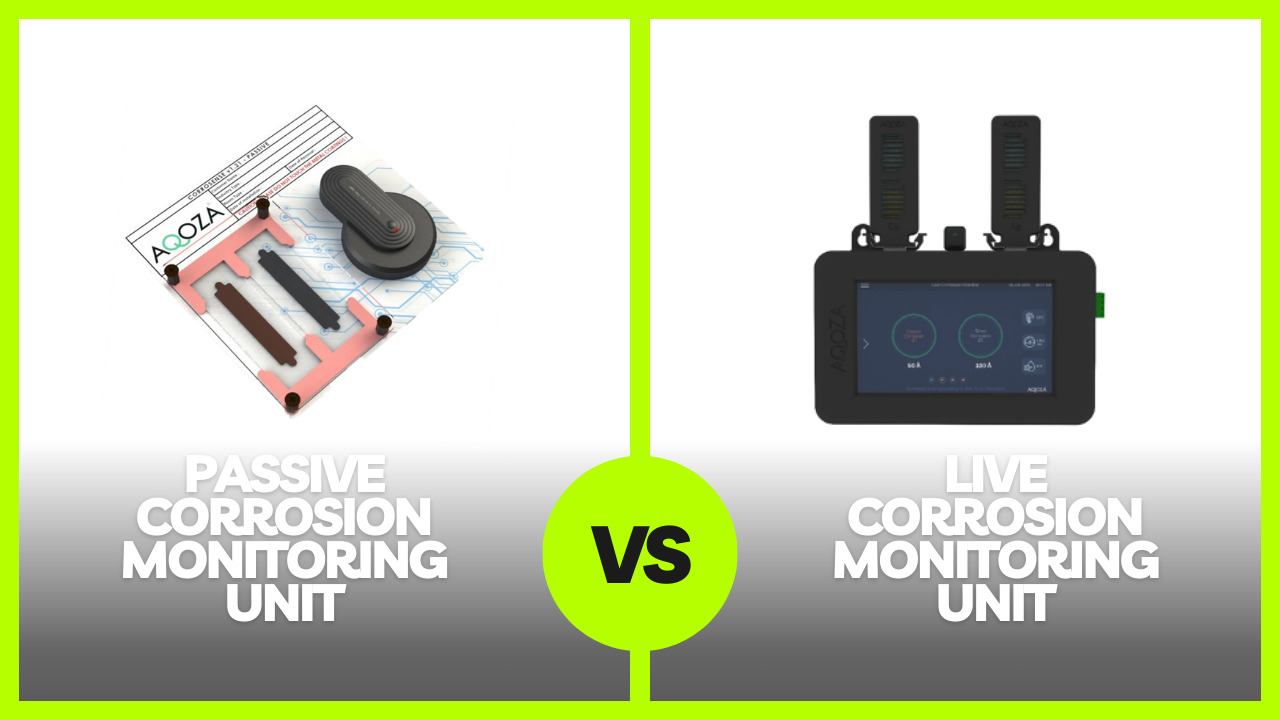Which is right for you? - Passive or Live Corrosion Monitoring Unit
AISHWARYA PM
20 May 2024
AISHWARYA PM
20 May 2024

Electronics have become more complex & compact. They are made for their electrical and magnetic properties and are not inherently resistant to corrosion. The adherence to RoHS standards has further led to the removal of components like Cd, Pb, Hg, etc. This has rendered them more susceptible to corrosion due to the infiltration of gas phase molecules.
Monitoring corrosion for electronics is vital because it stops them from getting damaged or breaking down. Keeping an eye on corrosion levels helps us identify problems early and fix them before they get worse. This makes sure the electronics last longer and work properly, saving us money on repairs and helping us to cut down costs due to downtime.
What are the two ways to monitor corrosion?
1. Passive Corrosion Monitoring Unit: It measures corrosion passively inside the facility. A minimum exposure of 30 days is required to accurately sense the corrosivity level. Once the analysis period is over, they are taken back for analysis. It has a Temperature - humidity logger which detects the variations of the same. customers are provided with a report detailing the severity level as well as the fluctuation in the temperature and humidity levels in the room based on ANSI / ISA 71.04 standard.
2. Live Corrosion Monitoring Unit: Real-time data is depicted on the home screen. The severity level along with the temperature, pressure, and relative humidity values are also internally logged. Detailed logs can be downloaded anytime as per the requirement for analysis. It supports multiple communication protocols to transmit data internally. Within the life of sensor cartridges, multiple locations can be monitored with a single equipment.
The process of both these units complies with international standards ANSI/ISA-S71.04 for measuring corrosion levels in the environment.
While both Live and Passive monitors use copper and silver to assess atmospheric corrosion, specific requirements will determine which option is best suited for your needs.
Choosing the Ideal Corrosion Monitoring Unit for Your Facility
How can you determine which corrosion monitoring unit will effectively meet your facility's needs? It all comes down to a few factors.
Why Live Corrosion Monitoring Unit?
• It is essential in areas where failures occur frequently, requiring continuous monitoring to maintain operations and prevent downtime.
• Real-time data of severity level, temperature and relative humidty.
• Multiple Communication protocols like RS 485, MODBUS, 4-20mA.
• It also helps in ensuring the corrosion control methods are working effectively.
• Can be used in multiple facilities to check the severity level as per the instructions, within the senor life.
• Logs the complete data for analysis.
Online corrosion monitoring units are ideal for places like data centers or critical control rooms that cannot afford any downtime and or unplanned maintenance for their smooth operations. They are ideal for businesses that require continuous monitoring. They are also helpful for places already using Corrosion control solutions to ensure its effectiveness.
Why Passive corrosion monitoring units?
• It is an affordable corrosion auditing solution.
• Suitable for intermittent corrosion audits at different times of the year.
• Majorly used for initial corrosion audit when the failures are lower and non-critical.
• Easier installation and robust in construction.
• Does not require any power source to function.
• Helps in categorizing the facility atmosphere to plan for corrosion control methods.
This solution is suitable for any firm seeking a budget-friendly monitoring unit. It's a cost-effective option for facilities initiating a corrosion monitoring program for the first time. Additionally, even if initial results indicate low corrosion levels, utilizing coupons for ongoing monitoring is still advantageous in ensuring equipment safety.
Remember that selecting the right monitoring technique depends on the specific electronic components, their environment, and the level of corrosion risk. Integrating these methods into your electronics maintenance strategy can enhance reliability and prevent unexpected failures.
Still confused about which one to choose from? Talk with the experts.

